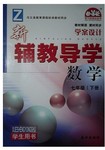题目内容
It has been my lifelong dream to play on the middle school basketball team.I began playing basketball when I was in the second grade.My elder brother taught me to play.He practiced with me every afternoon and always attended my games with my parents.
This year,I started the sixth grade.The middle school wanted to choose new members for the school team.In order to be a member of the team,my brother helped me prepare for it.The tryouts were held last Saturday morning.Twenty-three students from my grade tried out for the team but the school only needed five.I knew I worked as hard as I could and I thought I had done a good job,but I was still nervous on Saturday night and Sunday morning,waiting for the result.On Sunday afternoon,my parents took me to the school and I was so happy when I saw my name on the list.
My parents and nay brother are proud of me.I'll work very hard to stay on the team.
1.What does the underlined word “tryouts” mean in Chinese?
A.选拔. B.出来. C.练习. D.努力.
2.How did the boy feel when he saw his name on the list?
A.nervous. B.excited. C.angry. D.sad.
3.What is the best title of the passage?
A.My family. B.My brother and me.
C.Realizing my dream. D.Playing basketball.
ABC

 新辅教导学系列答案
新辅教导学系列答案 阳光同学一线名师全优好卷系列答案
阳光同学一线名师全优好卷系列答案A rabbit is running into his hole. You may ask, “What happened?”
Well, when a rabbit sees something dangerous, it runs away. Its tail moves up and down as it runs. When other rabbits see this tail moving up and down, they ran, too. They know there is danger. The rabbit has told them something without making a sound. It has given them a signal.
Many other animals use this kind of language. When a bee finds some food, it goes back to his home. It can’t tell the other bees where the food is by speaking to them, but it does dance in the air. This tells the bees where the food is.
But animals say things by making sounds. A dog barks, for examples, when a stranger comes near. A cat purrs(发出呼噜呼噜的声音) when pleased. Some birds make several different sounds, each with its own meaning.
But human beings have something that no animals have---- a large number of words about things, actions, feelings or ideas. We are able to give each other information to tell or inform other people what is in our mind or how we feel. By writing words down we can remind ourselves of the things that have happened, or send messages to people far away. No animals can do this. No animals has the wonderful power of language.
No one knows how man learned to make words. Somehow he learned to make them. As centuries went by, he made more and more new words. This is what we mean by language.
People in different countries made different kinds of words. Today there are about fifteen hundred different languages in the world. A very large English dictionary, for examples, contains four or five hundred thousand words. But we don’t know all these. The words we know are called vocabulary. We should try to make our vocabulary larger. Read as many books as possible. When we met a new word, look it up in the dictionary. A dictionary is the most useful book.
【小题1】What’s the meaning of the underlined word?
| A.标语 | B.信号 | C.唱片 | D.图像 |
| A.by giving signals | B.by making different sounds |
| C.by purring | D.by barking |
| A.give the others information |
| B.express their actions and feelings with words |
| C.tell others how they feel |
| D.make different sounds, each with its own meaning. |
| A.all the words that we know | B.more and more words we use |
| C.all the words we need | D.the dictionary which contains thousands of words |
| A.Make more and more new words |
| B.look up some new words in a dictionary |
| C.learn more language |
| D.Try to read as many books as possible |
Animals, including insects, don’t have a ‘language’ like ours. They do not ‘talk’ to each other in words and sentences. But if we watch them, we can see that they do have their ways of communicating (交流) with each other.
Can you see the rabbit’s tail? When rabbits see this white tail moving up and down, they run away. They know that they are in danger. The rabbit has told them something without making a sound. It has given them a signal.
Many other animals use this kind of ‘language’. When a cobra(眼镜蛇)is angry, it raises its head and makes itself look powerful(有力的). This warns other animals. When a bee(蜜蜂)has found food, it goes back to its home. It cannot ‘tell’ the other bees where the food is by speaking to them, but it does a little dance. This tells the bees where the food is.
Some animals ‘say’ things by making sounds. A dog barks, for example, when a stranger comes near. A cat purrs when it is pleased. Some birds make several different sounds, each with its own meaning. Sometimes we human beings speak in the same way. We make sounds like “Oh” or “Ah” when we are frightened or pleased or when we drop something on our toes.
【小题1】Which one is TRUE according to the passage?
| A.Animals have languages like human beings. | |
| B.Bees communicate with each other by dancing. | |
| C.Animals can use words. | D.Animals are brave. |
| A.warn other rabbits when they are in danger | B.tell other rabbits where food is |
| C.make itself look powerful | D.help it to run fast |
| A.makes a loud noise | B.raises its head |
| C.moves up and down | D.does a little dance |
| A.rabbit | B.bee | C.bird | D.fish |
| A.all living things | B.all animals | C.some birds | D.human beings |
 k
her plate by the zinnias. Suddenly she caught something. “Emily!” she called. “I’ve
got the Tinkle Bee!” Emily rushed over. They sat down on the grass. Tina opened
her hand very carefully. There was that sound! Something was shining in Tina’s
hand. They smiled. Then Emily cried, “It’s a fairy (仙女)!” Tina looked down at it in her hand. It looked like
a girl. A tiny girl with wings! Tina dropped it before she noticed that
a wing was torn (撕裂). The little fairy could not fly away so
she took a piece of grass out of the ground and sat on it.
k
her plate by the zinnias. Suddenly she caught something. “Emily!” she called. “I’ve
got the Tinkle Bee!” Emily rushed over. They sat down on the grass. Tina opened
her hand very carefully. There was that sound! Something was shining in Tina’s
hand. They smiled. Then Emily cried, “It’s a fairy (仙女)!” Tina looked down at it in her hand. It looked like
a girl. A tiny girl with wings! Tina dropped it before she noticed that
a wing was torn (撕裂). The little fairy could not fly away so
she took a piece of grass out of the ground and sat on it.